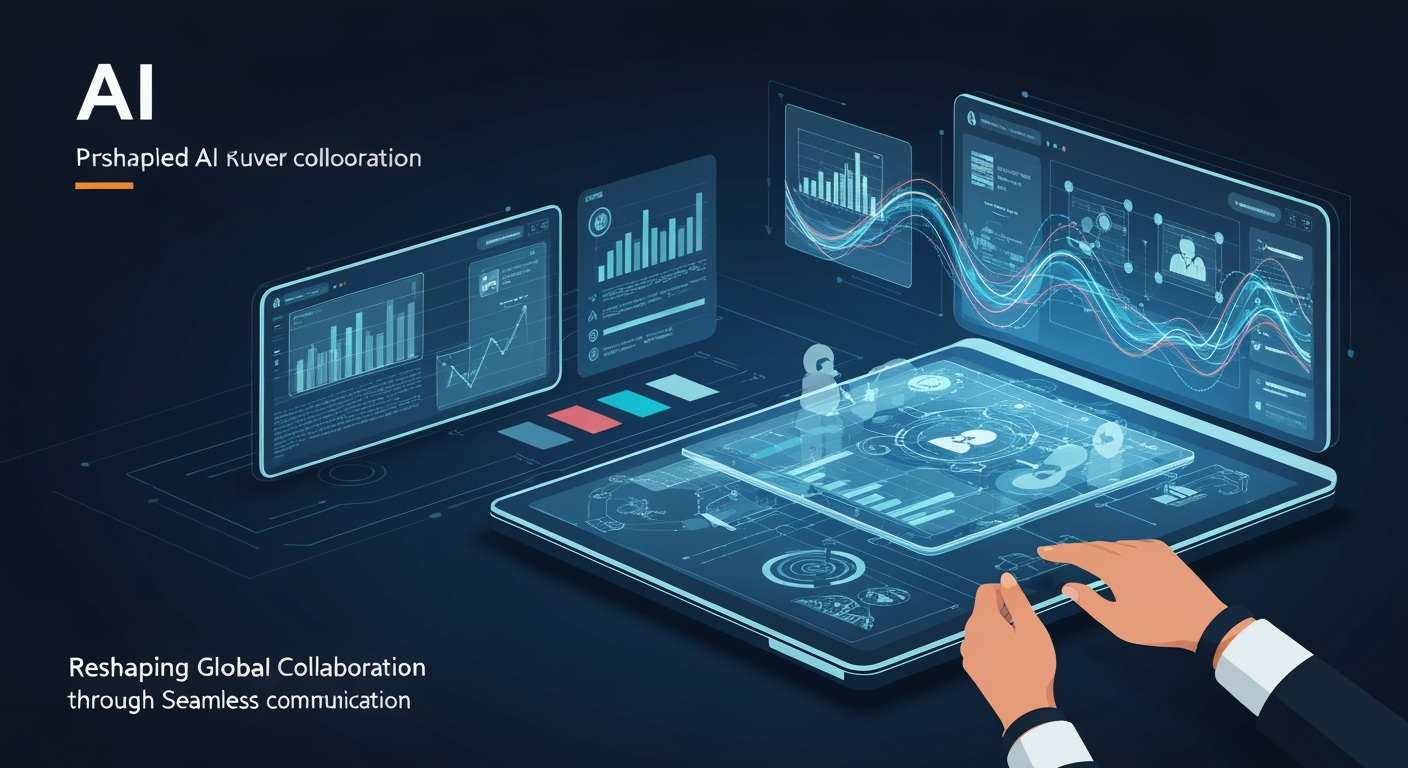The AI Voice Revolution
It feels like just yesterday we were marveling at chatbots. Now, AI voice agents are not just answering questions; they're sounding eerily human. They're handling customer service, scheduling, even sales calls. It's a game-changer, no doubt. But here at IndiaNIC, a question often pops up in our discussions: are these incredible AI voices enough? Or do we still need the old-fashioned human touch? And what about this 'Human in the Loop' (HITL) approach everyone talks about? Is it truly the magic bullet?
In my journey, working with diverse businesses from bustling Dubai to innovative Seattle, I've seen firsthand the dizzying pace of technological adoption. We're all chasing efficiency, scalability, and that perfect customer experience. AI voice agents promise a lot, and they deliver on many fronts. But the real challenge, as I see it, is finding that sweet spot where technology enhances, rather than diminishes, human connection.

AI's Efficiency Power
Let's be honest, AI voice agents are incredibly powerful. They don't get tired, they don't have bad days, and they can handle thousands of calls simultaneously. For routine queries, FAQs, or directing customers to the right department, they are unbeatable. Think about the sheer volume of interactions they can manage, freeing up human agents for more complex tasks. It's a win-win, right?
Success story: I remember Michael from Dubai, CEO of a fast-growing e-commerce platform. His customer service lines were getting swamped during peak sales. We implemented an AI voice agent solution, primarily for order tracking and basic FAQs. Within weeks, his team saw a 40% reduction in simple inquiries, drastically cutting wait times. Michael called me, ecstatic, saying, "Sandeep, my customers are happier, and my team can actually breathe! This AI is a superstar!"
AI's greatest strength isn't just automation; it's the ability to make the mundane magnificent.
But even with all this power, there's always a funny side. Here's a funny one: Our AI voice agent once told a customer, 'Please hold, your call is very important to us... just not important enough for a human yet.' Luckily, it was during testing!
The speed and scale are undeniable. But what happens when the conversation veers off script? Or when emotions run high? That's where the plot thickens.
The Human Touch's Depth
This brings us to the irreplaceable human element. Empathy, nuanced understanding, creative problem-solving – these are uniquely human traits. An AI can process words, but it struggles with subtext, sarcasm, or the raw emotion in a caller's voice. When a customer is frustrated, confused, or just needs to feel heard, a human connection can turn a potentially negative experience into a positive one.
Experience story: Our developer, Mihir from Ahmedabad, was working on a complex AI voice agent for a healthcare client. The challenge wasn't just understanding medical terms, but also the delicate emotional context. He shared, "Sometimes, a patient isn't asking a question; they're expressing fear. No algorithm can truly comfort them like a calm human voice can, even if the AI provides the correct info." Mihir and his team dedicated weeks to building sophisticated sentiment analysis, but ultimately, they knew the hand-off to a human was critical for true care.
Think about a crisis situation. Would you rather talk to an AI or a person who can genuinely understand your distress? The answer is almost always human. This isn't about technology failing; it's about recognizing where its strengths lie and where human intuition takes over.
Is Human in the Loop Enough?
So, we come to the 'Human in the Loop' (HITL) approach. This is where AI handles the initial interaction, and if things get too complex or emotional, it seamlessly transfers the call to a human agent. It sounds perfect on paper, doesn't it? You get the best of both worlds: AI's efficiency and human empathy.
Many of our clients swear by it. Success story: Jennifer from Seattle, who runs a travel agency, uses an HITL model. Their AI handles flight changes and basic bookings. But when a customer calls distraught because their passport is missing a day before their trip, the AI recognizes the urgency and emotional distress, instantly routing it to a human. Jennifer told me, "That seamless hand-off is a lifesaver. My team handles the high-value, high-emotion cases, and our AI ensures no one waits for simple stuff. It builds incredible loyalty."
But here's the kicker: is 'enough' really the right metric? Is just having a human ready to jump in sufficient? Or should we be thinking about a more integrated, symbiotic relationship? Sometimes, the hand-off itself can feel clunky if not designed right. It's not just about having a human available; it's about making that transition feel natural and supportive, not like a machine giving up. What are your thoughts on this? Have you experienced a truly seamless HITL hand-off, or one that made you want to scream?
Beyond the Loop: Strategic Integration
I believe the future isn't just 'Human in the Loop'; it's 'Human AND AI in a Strategic Partnership.' It's about designing systems where AI doesn't just pass the buck, but rather, pre-processes information, suggests solutions, and empowers the human agent to provide even better service. It's about intelligent collaboration.
Reflection story: I recall a discussion with our team, including Brinda from Ahmedabad and Saurabh from Hyderabad, about designing an AI assistant for internal IT support. Instead of just answering FAQs, we aimed for it to diagnose common issues, pull up relevant knowledge base articles, and even draft initial responses for the human agent, who could then add the personal touch and nuanced explanation. It transformed their productivity and job satisfaction. It wasn't about replacing; it was about enhancing.
It's like a seasoned chef (human) with an incredible set of automated tools (AI). The tools speed up prep and execution, but the chef's expertise, creativity, and palate are what make the dish truly exceptional. We need to move beyond simply 'fixing' AI's limitations with a human, and instead, design systems where both play to their unique strengths.
The True Balance Point
So, is 'Human in the Loop' enough? In many cases, yes, it provides a functional and effective solution. But for those of us striving for excellence, for truly delightful customer experiences and truly empowered teams, we need to aim higher. We need to think about a deeper integration, a strategic partnership where AI and human intelligence don't just coexist but actively elevate each other.
The right balance isn't a fixed point; it's a dynamic equilibrium. It requires continuous analysis, understanding your specific customer needs, and embracing technology not as a replacement, but as a powerful co-pilot. As we at IndiaNIC continue to innovate, our focus remains on creating solutions that harness the best of both worlds – the precision of AI and the irreplaceable warmth of human connection.
What's your vision for this future? How do you see AI and humans collaborating in your industry?




